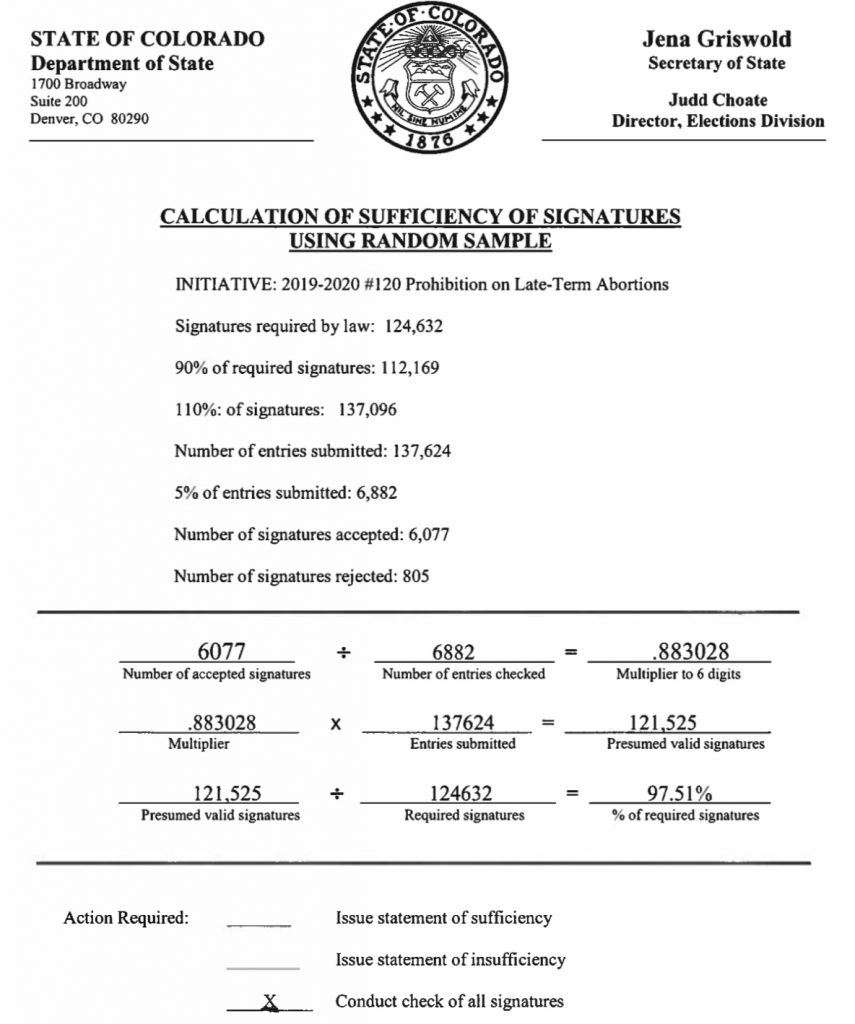The ballot initiative campaign to ban abortion at 22 weeks has completed a critical step in placing the initiative on Colorado’s November ballot.
In a press release, the campaign, dubbed “Due Date Too Late,” announced that it received notification from the Secretary of State that it had reached the minimum threshold for valid signatures based on a 5% random sample of the total number of signatures submitted by the campaign on the March 4 deadline.
With the preliminary quality check complete, the Secretary of State’s office will now manually review all of the initiative’s petitions, going line by line to determine whether the signatures are sufficient.
The Secretary of State has until April 3 to either issue a statement of sufficiency, or grant proponents a 15 day period to cure invalid signatures and continue circulating petitions.
Last weekend, the campaign revealed in an email to supporters that it had asked the Secretary of State for “additional considerations” due to coronavirus in case of a cure period.
Typically, ballot initiative campaigns need tens of thousands of extra signatures to account for those deemed invalid. Previous initiatives seeking to ban abortion in Colorado had signature validity rates between 75 and 81 percent.
The Due Date Too Late campaign submitted 137,624 signatures on the March 4 deadline, exceeding the 124,632 valid signatures required to place the measure on the ballot by a relatively small margin.
The campaign claimed in their press release that based on the random sample of signatures, the projected signature validity rate for their initiative was 97.5 percent — a staggeringly high validity rate.
“Based on the projection, if we are short it will be by a small margin which can be readily rectified with the help of our dedicated volunteers,” said Due Date Too Late spokesperson Lauren Castillo.
That claim, however, isn’t correct.
According to the random sample calculation, which the Colorado Times Recorder received from the Secretary of State’s office, the initiative had a validity rate of 88 percent. That means 121,525 of the total signatures, or 97.5 percent of the required number, are presumed to be valid, potentially leaving them about 3,000 signatures or 2.5 percent short of meeting their goal.
“Again, this is based upon 5 percent of the signatures,” explained Steve Hurlbert, a spokesperson for the Secretary of State. “The 88 percent validity rate won’t stay the same after reviewing the additional 95 percent of signatures and the projected number of valid signatures will also change after a full line-by-line review. “
Due Date Too Late did not return an email requesting comment and asking whether they’d clear up the misinformation in their press release.




